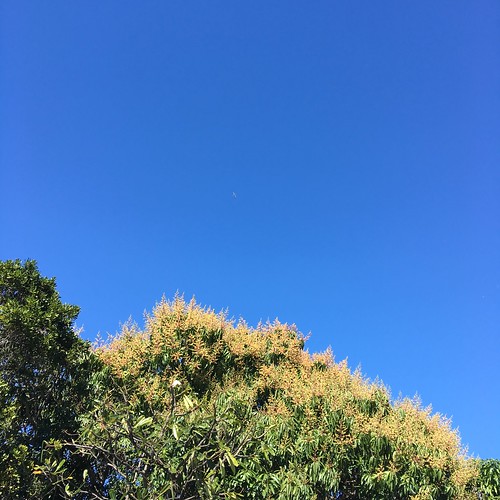Ontained 40 mM CsOH in spot of KOH. For loosepatch recordings, typical
Ontained 40 mM CsOH in location of KOH. For loosepatch recordings, regular patch pipettes have been filled with either Csbased internal or external saline diluted for the identical osmolarity as our internal option (265 three mOsm). To establish a loosepatch recording, positive stress was released just before encountering the cell to stop formation of a tight seal, and weak damaging stress was applied to PubMed ID:https://www.ncbi.nlm.nih.gov/pubmed/11836068 gently draw the targeted cell toward the pipette. Loosepatch recordings were performed in voltageclamp mode using the command voltage adjusted to ensure that the holding current was basically zero. Cells that showed evidence of membrane rupture (observed as a adjust in spike waveform and also a reasonably massive holding potential) had been discarded. All recordings were created employing an Axopatch 200B amplifier (Molecular Devices). Recordings had been lowpass filtered at 2 kHz just before digitization at 0 kHz. A caveat connected with our measurements of resting prospective (see Fig. eight D, E) would be the difficulty of accurately measuring resting prospective in neurons with a highinput resistance, due to the substantial depolarizing impact of your seal current in smaller cells (Gouwens and Wilson, 2009). We controlled for this factor by applying a continual negative holding present to compensate for the seal current. We chosen the holding existing in each and every cell in order that the wholecell spontaneous firing price was equivalent to the loosepatch spontaneous firing price in that cell. Many of the same LN recordings analyzed here were utilised within a set of published analyses focusing on activity summed across all LNs, rather than diversity across LNs (Nagel et al 205, their Fig. 5). Odor stimulation. The fly was restrained in a horizontal platform that permitted the dorsal element of the head to be bathed in saline when the ventral aspect from the head (such as the antennae and maxillary palps) and most of the physique remained dry and exposed to odors. Odor stimulation was delivered by way of a swiftly switching threeway solenoid valve (LFAA2060H, Lee Corporation) positioned close for the fly. A Teflon odor delivery tube (three cm extended, .five mm inner diameter) was connected the outlet of the valve along with the finish of your tube was situated mm in the fly’s head. Two miniature video cameras (Unibrain) have been utilised to reliablyNagel and Wilson Inhibitory Interneuron Population DynamicsJ. Neurosci April 3, 206 36(five):43254338 Aodor concentration (a.u.)high windspeedCspikessec 60 40 20fast OND60 40 20slow ONlow Relebactam windspeed60 40 20 0 60 40 20 0 spikessec2 secodor concentration (a.u.) spikessecB60 40 20 0  2 sec60 40 202 secEspikessec 60 40 20fast OFFF60 40 20slow OFFG60 40 20ONOFFspikessec60 40 2060 40 2060 40 20spikessec60 40 2060 40 2060 40 20Figure . Odor fluctuations on lots of timescales along with the diversity of LN responses in the time domain. A, Odor concentration versus time within a turbulent plume, measured using a photoionization detector (arbitrary units but with constant scaling in the major and bottom traces). In the viewpoint of a stationary odor sensor, reduced wind speeds produce longer odor encounters, also as longer intervals among encounters. B, Odor concentration versus time, again measured having a photoionization detector (single trials) in response to a long (two s) odor valve opening as well as a 0 Hz train of brief odor valve openings (20 ms every single). Note that the odor delivery technique is capable to deliver “artificial plumes” that happen to be faithful towards the pattern of odor valve opening. C , Rasters and corresponding peristimulus time histogra.
2 sec60 40 202 secEspikessec 60 40 20fast OFFF60 40 20slow OFFG60 40 20ONOFFspikessec60 40 2060 40 2060 40 20spikessec60 40 2060 40 2060 40 20Figure . Odor fluctuations on lots of timescales along with the diversity of LN responses in the time domain. A, Odor concentration versus time within a turbulent plume, measured using a photoionization detector (arbitrary units but with constant scaling in the major and bottom traces). In the viewpoint of a stationary odor sensor, reduced wind speeds produce longer odor encounters, also as longer intervals among encounters. B, Odor concentration versus time, again measured having a photoionization detector (single trials) in response to a long (two s) odor valve opening as well as a 0 Hz train of brief odor valve openings (20 ms every single). Note that the odor delivery technique is capable to deliver “artificial plumes” that happen to be faithful towards the pattern of odor valve opening. C , Rasters and corresponding peristimulus time histogra.